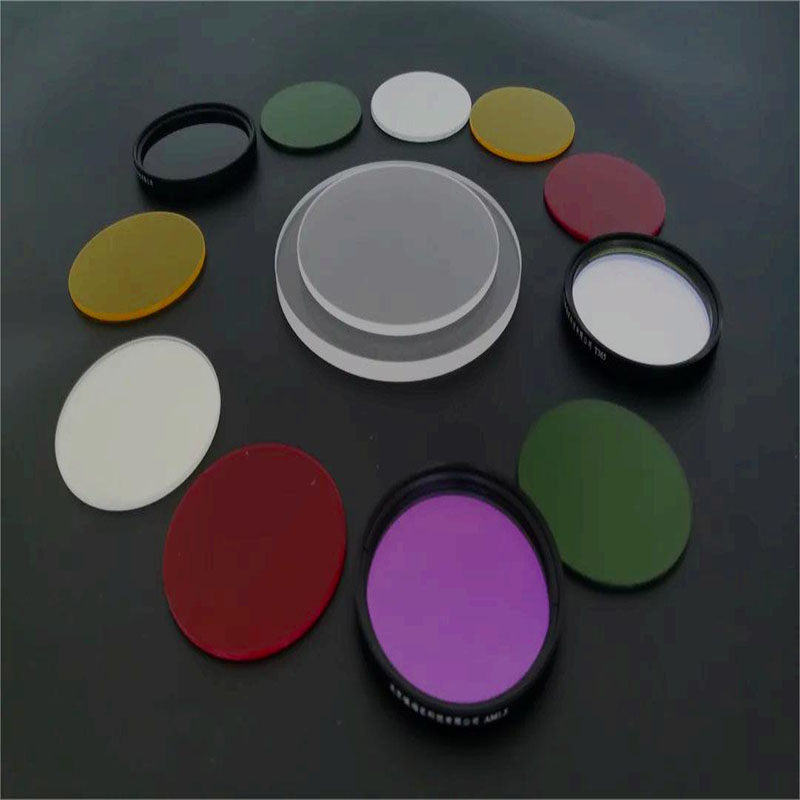
Filters are made of plastic or glass and special dyes. A red filter only allows red light to pass through; similarly, for other colors. The refractive index of the glass sheet initially resembles air, so all colored light can pass through, making it transparent. However, when dyes are added, the molecular structure changes, altering the refractive index, and thus changes the transmission of certain colored lights. For instance, when a beam of white light passes through a blue filter, it emits blue light, while green and red lights are largely absorbed by the filter. The role of filters is evident. They are widely used in the photography industry. Why do primary scenes in some landscape photographs by master photographers stand out so much? This is where filters come into play.
Filters are made by adding special dyes onto a plastic or glass substrate or by evaporating optical films onto their surface to attenuate certain light wavebands. They can accurately select a narrow range of light waves to pass through while reflecting other unwanted light waves. By altering the filter's structure and the optical parameters of the film layers, various spectral characteristics can be achieved. Filters can control and adjust the transmission, reflection, polarization, or phase state of light waves. Filters are generally classified by spectral band, spectral characteristics, coating materials, and application traits. Based on spectral characteristics, filters can be divided into band-pass filters, cut-off filters, dichroic filters (half mirrors), neutral density filters, reflective filters, and others. Spectral bands can be divided into ultraviolet band filters, visible light filters, and infrared band filters. Filters can be divided by the thin film materials they use into soft film filters and hard film filters; based on application traits, they can be divided into medical biochemical instrument filters, fluorescence microscope filters, multi-band hard meningeal filters for police use, and so on.
Filters contain crystals and blue glass. The AR coating on the crystal surface is used to improve light transmission, while the blue glass filters out infrared rays. Besides special filters used in black-and-white and color photography, some filters can be universal, such as UV lenses, polarizing lenses, neutral gray lenses, soft focus lenses, fog lenses, and so forth. Due to limited space, we only introduce some commonly used filters. UV filters, also known as UV lenses, absorb ultraviolet rays and a small amount of blue ultraviolet light invisible to the human eye, enhancing the clarity of distant scenes. Additionally, they serve to protect the lens from water and dust, which is why photographers like to install a UV lens on each lens. Polarizers, also known as polarizing lenses, need angle adjustment to eliminate polarized light. The main functions of polarizers are: eliminating reflections on non-metallic surfaces; darkening the blue sky, deepening its tone, and increasing the color saturation of the subject; since polarizers are gray, they also act as neutral density filters by blocking light. Soft lenses, also known as soft-focus lenses, are colorless and transparent with varying density patterns on the surface. They can scatter beams, thereby creating a softening effect, often used in portrait photography. Special effects filters can change the normal effect of an image and make the screen display various wonderful changes. There are two types of optical filters for installation and use. One type uses colored or colorless optical glass on lenses. For conceptual clarity, we refer to them as filters. These filters, according to their photographic uses, can be divided into black-and-white photography filters, color photography filters, commonly used black-and-white photography filters, and special effects filters.